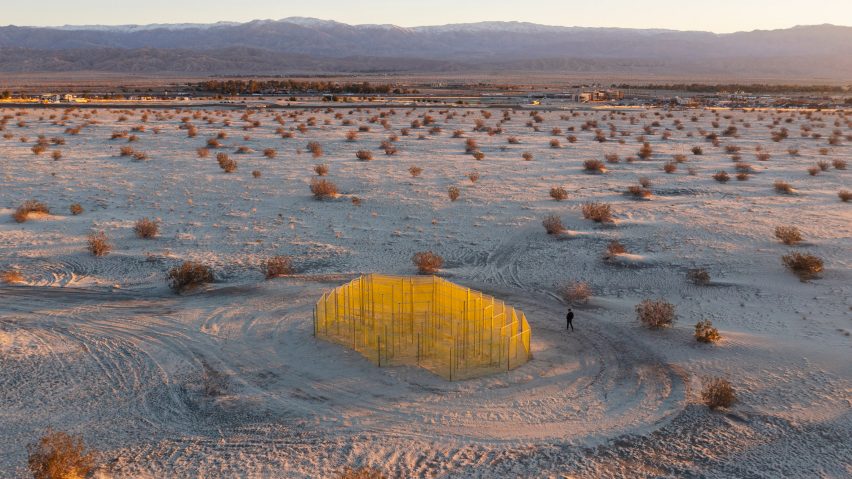
Desert X 2023 features a sculpture made of piled shipping containers
Large-scale works by 12 international artists have been installed throughout the desert landscape of California's Coachella Valley for the fourth iteration of the Desert X exhibition.
Each of the installations was based on the theme of "change" in the wake of the climate crisis and globalism and design's potential responses.
Taking a variety of forms and subject matter, the works range from a massive pile-up of shipping containers by American artist Matt Johnson, to an abstract sculpture made of yellow chain-link fence by UK-based artist Rana Begum.
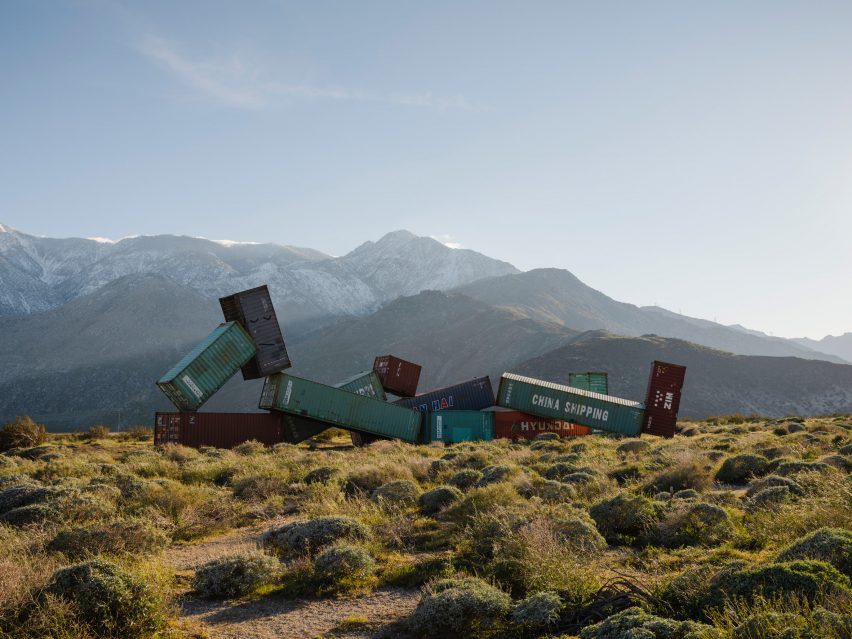
Curated by Neville Wakefield and Diana Campbell, Desert X is meant to be "site-specific", and has also created exhibitions of installations in the desert of Saudi Arabia.
"Desert X 2023 can be seen as a collection of artistic interventions that make visible how our energy has a transference far beyond what we see just in front of us in our own localities," said Campbell.
"From deserts to floodplains, finding, building and developing tools and tactics to shelter our minds and bodies from the harshness of the world outside are essential to survival."
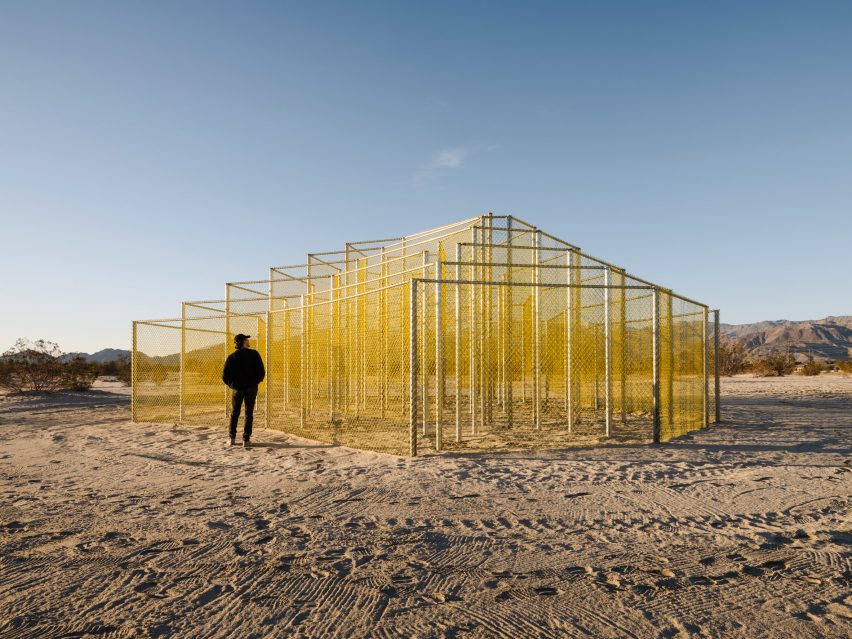
In terms of response to globalisation and climate disaster, Johnson's work, called Sleeping Figure, seems especially prescient given the recent train derailments in the United States, but was conceived as a reference to the 2021 Suez Canal obstruction.
The work is a "cubist rendition of a classical odalisque" that "speaks to the crumples and breaks of a supply chain economy in distress".
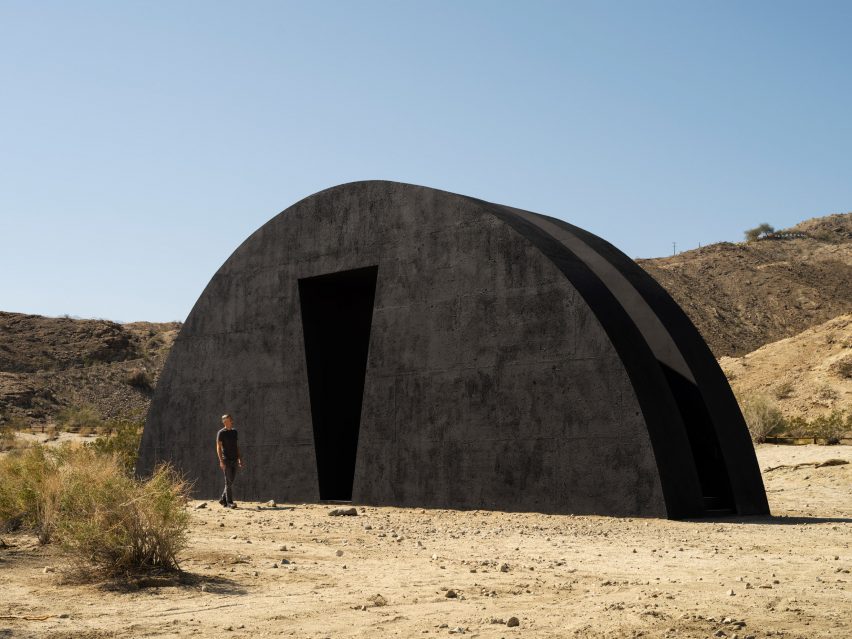
Begum's installation No. 1225 Chainlink too relies on industrial materials.
It references the "ubiquity" of the fence in the valley to express its double meanings of "protection" and "violence" and diffuses it in order to offer "paths of expansive escape rather than reductive confinement".
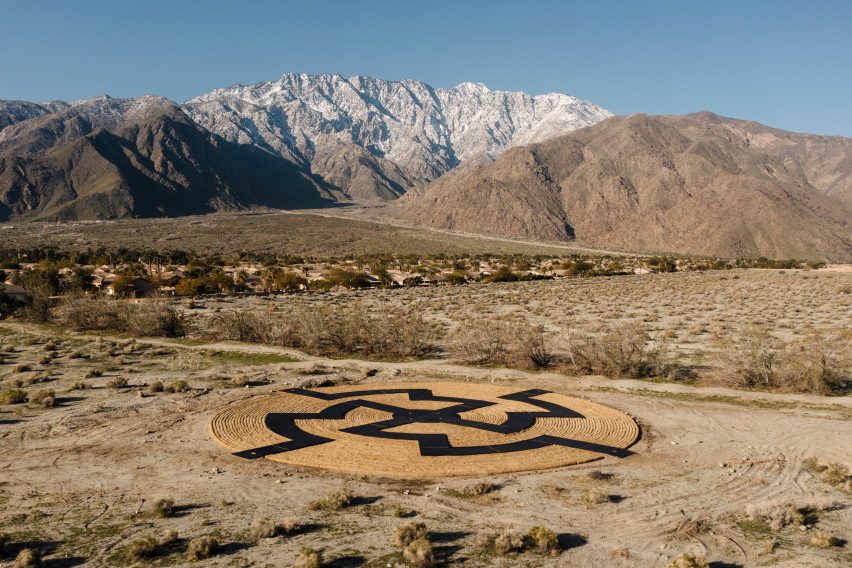
New York-based Torkwase Dyson's installation is a dark, monumental sculpture called Liquid A Place that invites "viewers to consider their bodily interconnection with rivers and oceans that surround us.
The black semicircular form has a portal in the middle and stairway running up the circumference to create a viewing platform in the desert.
Mexican artist Mario García Torres designed an array of mechanical reflective surfaces called Searching for Sky (While Maintaining Equilibrium)that replaces the bull component of mechanical bulls.
The metallic pieces, meant to replicate a "herd", have the appearance of solar panels, illustrating a change in the economic spatial makeup of the landscape.
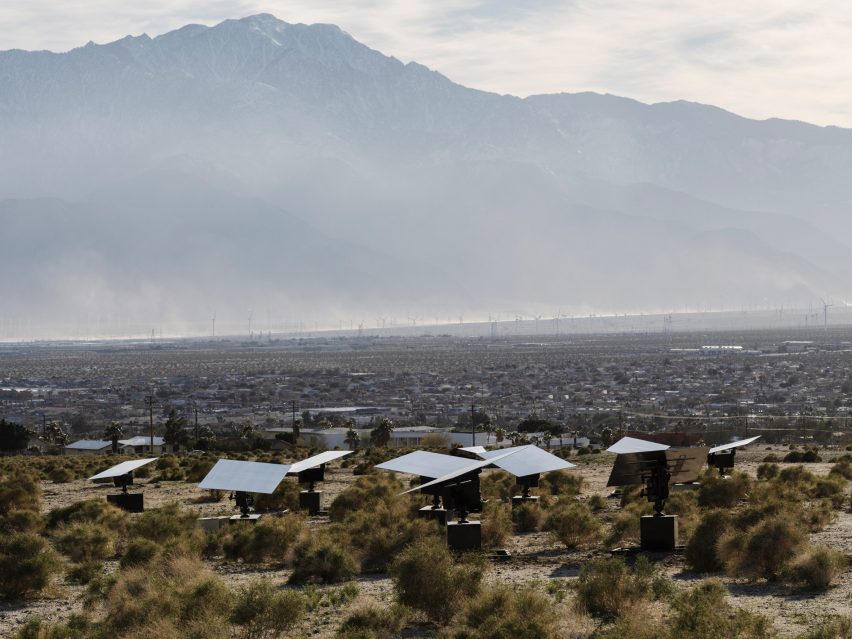
Artist Gerald Clarke, who works on the nearby Cahuilla Indian Reservation, also took up a direct dialogue with the desert for Immersion, a massive glyph that references the "language of the traditional Cahuilla basket" to immerse visitors in the Indigenous history of the valley.
Also referencing the changing nature of commercial space in the landscape are photographs taken by victim of police violence Tyre Nichols' prior to his death, which have been cast on billboards in a work called Originals that is meant to comment on the "state sanctioned violence of institutional racism".
Installations that rely on the local communities include Mexican artist Héctor Zamora's Chimera. It involved a set of metallic ballons cast into the shapes of words held by locals that pay "tribute to the informal economies on which Mexican society largely rests", specifically referencing the migrant communities in the United States.
Paloma Contreras Lomas, also from Mexico, created a sculpture that incorporate plush figures arrayed around a retro car to "caricature" both the western and sci-fi genres.
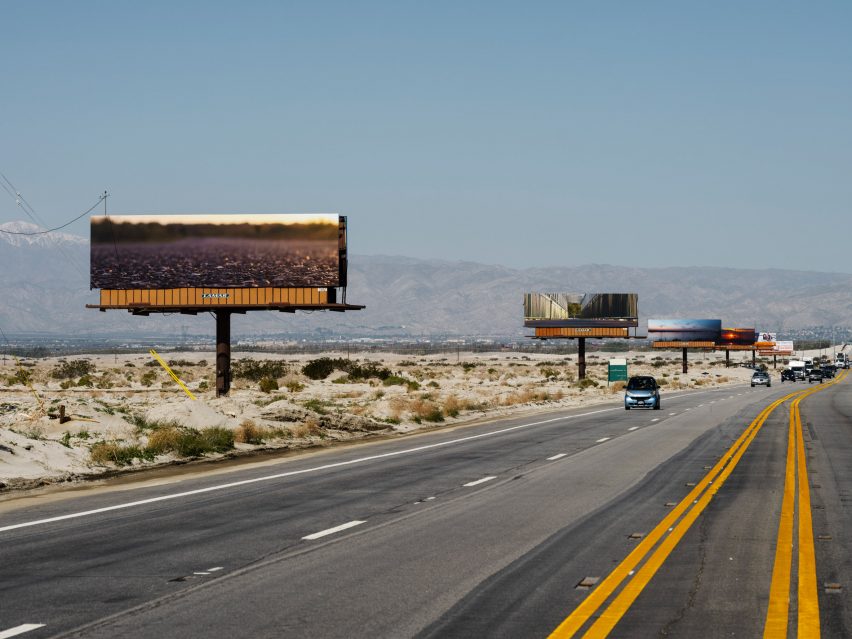
Lauren Bon, Hylozoic/Desires, Tschabalala Self, m and Marina Tabassum also contributed to the exhibition.
The photography is by Lance Gerber.
Desert X 2023 will be on show from 4 March to 7 May 2023 for the public in California. Visit Dezeen's Events Guide for more international events, exhibitions and fairs in architecture and design for more.